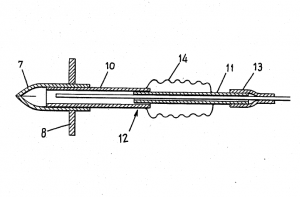 When describing an invention in a patent application, every inventor must disclose the best mode of carrying out the invention, known to the inventor. This requirement is found at 35 USC 112(a). Therefore if the inventor knows of multiple ways of making or using the invention, he/she must not withhold the best way known to him or her while disclosing one or more inferior ways. That is the inventor must not withhold disclosure of his/her preferred mode.
When describing an invention in a patent application, every inventor must disclose the best mode of carrying out the invention, known to the inventor. This requirement is found at 35 USC 112(a). Therefore if the inventor knows of multiple ways of making or using the invention, he/she must not withhold the best way known to him or her while disclosing one or more inferior ways. That is the inventor must not withhold disclosure of his/her preferred mode.
Courts have described the best mode requirement as one ensuring that the patent applicant plays ‘fair and square’ with the patent system. The requirement ensures a quid pro quo of disclosure exchanged for the patent grant. Amgen, Inc. v. Chugai Pharmaceutical Co., Ltd., 927 F.2d 1200, 1209-10 (Fed. Cir. 1991).
Go Medical Industries Example
Let’s see the best mode requirement in action. Go Medical Industries sued Alpine Medical for, among other things, infringement of US Patent No. 4,652,259 (the ‘259 patent). Go Medical Industries Pty., Ltd. v. Inmed Corp., 471 F.3d 1264 (Fed. Cir. 2006).
The ‘259 patent is directed to a catheter having a stop member that limits the insertion of a sheath of the catheter. It was known that urinary catheters can increase the risk of urinary tract infections because inserting a catheter can push bacteria into the normally sterile bladder. But, most of the bacteria are concentrated in the first 1.5 cm to 2 cm of the urethra, due to a natural pressure barrier located about 1.5 cm from the outer end.
The claims of the ‘259 patent are directed a stop member to limit the insertion of the sheath to either “about 1.5 cm” or moving the sheath along the urethra such that the distal end is in a “known position of maximum pressure,” but not beyond that position.
The original parent application did not contain a description of the 1.5 cm depth. Further, the inventor testified that when drafting the patent application, he purposefully “avoid[ed] any comment with relation to the length” because he “was aware that numbers would become limiting themselves.”
The appeals court concluded the inventor did not comply with the best mode requirement because the inventor viewed the (1) 1.5cm depth as the best mode and (2) did not disclose it in the original application. As a result, the ‘259 patent did not get the benefit of the parent application and was invalided by intervening prior art.
Lack of Best Mode No Longer a Defense
The American Invents Act changed the law to remove a best mode violation as an invalidity defense in an infringement suit. 35 USC 282(b)(3)(A). Therefore, the best mode might seem like a requirement with no teeth.
Reasons for Disclosing Best Mode
However, withholding the best mode is still not a good idea. The law requires it be disclosed. If it is not disclosed, then it will not be a part of your patent application. It may be that details about your best mode are necessary to obtain a patent over the prior art and the failure to include them will prevent you from obtaining a patent or from obtaining a patent with meaningful scope. Further, the failure to disclose the best mode might also result in a violation of the written description requirement.